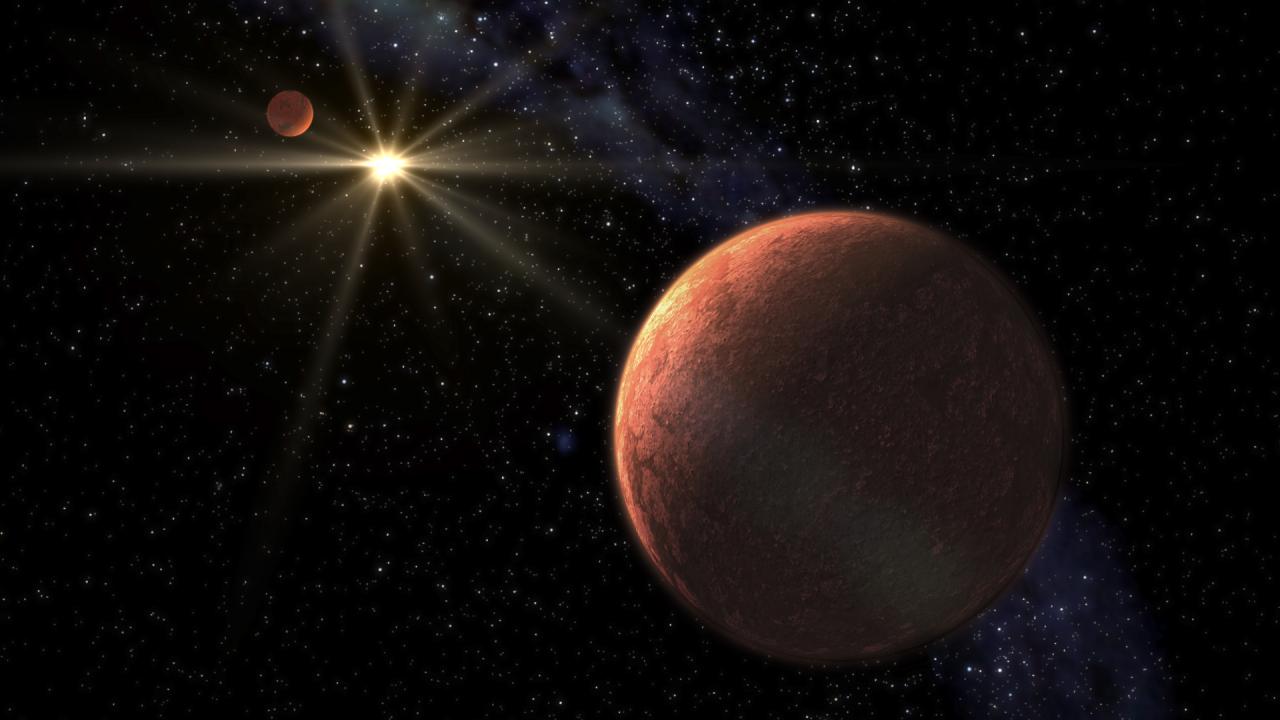General
Our goal is to study the processes that lead to the formation of low mass stars, brown dwarfs and planets and to characterize the physical properties of these objects in various evolutionary stages. Low mass stars and brown dwarfs are likely the most numerous type of objects in our Galaxy but due to their low intrinsic luminosity they are not so well known. We aim to study the frequency, multiplicity and spatial distribution of these objects in the solar neighbourhood and in nearby star forming regions and stellar clusters in order to better understand the mechanism of formation, characterise their optical and infrared properties and establish the relation between spectral properties, mass and luminosity.. Most of our effort will be dedicated to push toward lower mass limits the detection of these astros either bounded to stars and brown dwarfs and/or free-floating in interstellar space. The lowest mass objects display a lower intrinsic luminosity and cooler effective temperatures thus they are remarkably difficult to detect using direct imaging techniques. However, these techniques allow a full photometric and spectroscopic characterization and a best determination of their physical and chemical properties. We also aim to investigate the presence of planets around low mass stars using radial velocity measurements and techniques for high spatial resolution imaging. We will develop ultrastable spectrographs for large telescopes and systems for ultrafast imaging. With the spectrographs it would be possible to detect planets of similar mass to the Earth around G, K and M-type stars. The goal is to establish the frequency of these planets in stars of the solar neighbourhood and characterise the properties of the associated planetary systems.
Members
Results
- The optical and near-infrared sequence of 10 Myr-old L dwarfs in the nearest OB association to the Sun, Upper Scorpius
- The lithium depletion boundary of the Hyades cluster.
Scientific activity
Related publications
-
Two new young, wide, magnetic + non-magnetic double-degenerate binary systems
We report the discovery of two, new, rare, wide, double-degenerate binaries that each contain a magnetic and a non-magnetic star. The components of SDSS J092646.88+132134.5 + J092647.00+132138.4 and of SDSS J150746.48+521002.1 + J150746.80+520958.0 have angular separations of only 4.6 arcsec (a˜ 650 au) and 5.1 arcsec (a˜ 750 au), respectively
Dobbie, P. D. et al.Advertised on:
32012 -
Further investigation of white dwarfs in the open clusters NGC 2287 and NGC 3532
We report the results of a CCD imaging survey, complemented by astrometric and spectroscopic follow-up studies, that aims to probe the fate of heavy-weight intermediate-mass stars by unearthing new, faint, white dwarf members of the rich, nearby, intermediate-age open clusters NGC 3532 and NGC 2287. We identify a total of four white dwarfs with
Dobbie, P. D. et al.Advertised on:
72012 -
Discovery of the benchmark metal-poor T8 dwarf BD +01° 2920B
We have searched the Wide-field Infrared Survey Explorer first data release for widely separated (≤10 000 au) late T dwarf companions to Hipparcos and Gliese stars. We have discovered a new binary system containing a K-band suppressed T8p dwarf WISEP J142320.86+011638.1 and the mildly metal poor ([Fe/H] =-0.38 ± 0.06) primary BD +01° 2920 (HIP
Pinfield, D. J. et al.Advertised on:
52012 -
Disc frequencies for brown dwarfs in the Upper Scorpius OB association: implications for brown dwarf formation theories
We have investigated the brown dwarf (BD) and stellar disc fractions in the Upper Scorpius (USco) OB association and compared them with several other young regions. We have compiled the most complete sample of all spectroscopically confirmed BDs in USco and have made use of the Wide-field Infrared Survey Explorer (WISE) catalogue to identify the
Riaz, B. et al.Advertised on:
32012 -
Astrometric and photometric initial mass functions from the UKIDSS Galactic Clusters Survey - I. The Pleiades
We present the results of a deep wide-field near-infrared survey of the entire Pleiades cluster recently released as part of the UKIRT Infrared Deep Sky Survey (UKIDSS) Galactic Clusters Survey (GCS) Data Release 9 (DR9). We have identified a sample of ˜1000 Pleiades cluster member candidates combining photometry in five near-infrared passbands and
Lodieu, N. et al.Advertised on:
52012 -
A census of very-low-mass stars and brown dwarfs in the σ Orionis cluster
Context: The knowledge of the initial mass function (IMF) in open clusters constitutes one way of constraining the formation of low-mass stars and brown dwarfs, along with the frequency of multiple systems and the properties of disks. Aims: The aim of the project is to determine the shape of the mass function in the low-mass and substellar regimes
Lodieu, N. et al.Advertised on:
102009 -
Enhanced lithium depletion in Sun-like stars with orbiting planets
The surface abundance of lithium on the Sun is 140 times less than the protosolar value, yet the temperature at the base of the surface convective zone is not hot enough to burn-and hence deplete-Li (refs 2, 3). A large range of Li abundances is observed in solar-type stars of the same age, mass and metallicity as the Sun, but such a range is
Israelian, Garik et al.Advertised on:
112009 -
On the HU Aquarii planetary system hypothesis
In this paper, we investigate the eclipse timing of the polar binary HU Aquarii that has been observed for almost two decades. Recently, Qian et al. attributed large (O-C) deviations between the eclipse ephemeris and observations to a compact system of two massive Jovian companions. We improve the Keplerian, kinematic model of the light travel time
Goździewski, Krzysztof et al.Advertised on:
92012 -
New ultracool subdwarfs identified in large-scale surveys using Virtual Observatory tools. I. UKIDSS LAS DR5 vs. SDSS DR7
Aims: The aim of the project is to improve our knowledge of the low-mass and low-metallicity population to investigate the influence of metallicity on the stellar (and substellar) mass function. Methods: We present the results of a photometric and proper motion search aimed at discovering ultracool subdwarfs in large-scale surveys. We employed and
Lodieu, N. et al.Advertised on:
62012 -
The Substellar Population of σ Orionis: A Deep Wide Survey
We present a deep I, Z photometric survey covering a total area of 1.12 deg2 of the σ Orionis cluster and reaching completeness magnitudes of I = 22 and Z = 21.5 mag. From I, I - Z color-magnitude diagrams we have selected 153 candidates that fit the previously known sequence of the cluster. They have magnitudes in the range I = 16-23 mag, which
Béjar, V. J. S. et al.Advertised on:
122011 -
Search and characterization of T-type planetary mass candidates in the σ Orionis cluster
Context. The proper characterization of the least massive population of the young σ Orionis star cluster is required to understand the form of the cluster mass function and its impact on our comprehension of the substellar formation processes. S Ori 70 (T5.5 ± 1) and 73, two T-type cluster member candidates, are likely to have masses between 3 and
Peña-Ramírez, K. et al.Advertised on:
82011 -
Polarisation of very-low-mass stars and brown dwarfs. I. VLT/FORS1 optical observations of field ultra-cool dwarfs
Context: Ultra-cool dwarfs of the L spectral type (T_eff = 1400-2200 K) are known to have dusty atmospheres. Asymmetries of the dwarf surface may arise from rotationally-induced flattening and dust-cloud coverage, and may result in non-zero linear polarisation through dust scattering. Aims: We aim to study the heterogeneity of ultra-cool dwarfs'
Goldman, B. et al.Advertised on:
82009 -
New Isolated Planetary-mass Objects and the Stellar and Substellar Mass Function of the σ Orionis Cluster
We report on our analysis of the VISTA Orion ZY JHKs photometric data (completeness magnitudes of Z = 22.6 and J = 21.0 mag) focusing on a circular area of 2798.4 arcmin2 around the young σ Orionis star cluster (~3 Myr, ~352 pc, and solar metallicity). The combination of the VISTA photometry with optical, WISE and Spitzer data allows us to identify
Peña-Ramírez, K. et al.Advertised on:
72012 -
New constraints on the membership of the T dwarf S Ori 70 in the σ Orionis cluster
Aims:The nature of S Ori 70 (S Ori J053810.1-023626), a faint mid-T type object found towards the direction of the young σ Orionis cluster, is still under debate. We intend to find out whether it is a field brown dwarf or a 3-Myr old planetary-mass member of the cluster. Methods: We report on near-infrared {JHK}s and mid-infrared [3.6] and [4.5]
Zapatero Osorio, M. R. et al.Advertised on:
12008 -
Near-infrared low-resolution spectroscopy of Pleiades L-type brown dwarfs
Context. The fundamental properties of brown dwarfs evolve with age. Models describing the evolution of luminosities and effective temperatures, among other physical parameters, can be empirically constrained using brown dwarfs of various masses in star clusters of well-determined age and metallicity. Aims: We aim to carry out a spectroscopic and
Bihain, G. et al.Advertised on:
92010 -
Lucky Imaging Adaptive Optics of the brown dwarf binary GJ569Bab
The potential of combining Adaptive Optics (AO) and Lucky Imaging (LI) to achieve high-precision astrometry and differential photometry in the optical is investigated by conducting observations of the close 0.1 arcsec brown dwarf binary GJ569Bab. We took 50 000 I-band images with our LI instrument FastCam attached to NAOMI, the 4.2-m William
Femenía, B. et al.Advertised on:
52011 -
Infrared and Kinematic Properties of the Substellar Object G 196-3 B
We report unusual near- and mid-infrared photometric properties of G 196-3 B, the young substellar companion at 16'' from the active M2.5-type star G 196-3 A, using data taken with the IRAC and MIPS instruments onboard Spitzer. G 196-3 B shows markedly redder colors at all wavelengths from 1.6 up to 24 μm than expected for its spectral type, which
Zapatero Osorio, M. R. et al.Advertised on:
62010 -
High-contrast optical imaging of companions: the case of the brown dwarf binary HD 130948 BC
Context. High-contrast imaging at optical wavelengths is limited by the modest correction of conventional near-IR optimized AO systems. We take advantage of new fast and low-readout-noise detectors to explore the potential of fast imaging coupled to post-processing techniques to detect faint companions of stars at small angular separations. Aims
Labadie, L. et al.Advertised on:
22011 -
Discovery of a Wide Companion near the Deuterium-burning Mass Limit in the Upper Scorpius Association
We present the discovery of a companion near the deuterium-burning mass limit located at a very wide distance, at an angular separation of 4.6''+/-0.1'' (projected distance of ~ 670 AU) from UScoCTIO 108, a brown dwarf of the very young Upper Scorpius association. Optical and near-infrared photometry and spectroscopy confirm the cool nature of both
Béjar, V. J. S. et al.Advertised on:
22008 -
CLOUDS search for variability in brown dwarf atmospheres. Infrared spectroscopic time series of L/T transition brown dwarfs
Context: L-type ultra-cool dwarfs and brown dwarfs have cloudy atmospheres that could host weather-like phenomena. The detection of photometric or spectral variability would provide insight into unresolved atmospheric heterogeneities, such as holes in a global cloud deck. Indeed, a number of ultra-cool dwarfs have been reported to vary. Additional
Goldman, B. et al.Advertised on:
82008



